
How is Yoga Different From Stretching?
Yoga is such a stretch—in so many ways. The practice itself comes from India, and we use Sanskrit and Hindu words and phrases to describe the poses and even to greet each other. We bend our minds around a cultural gap to get into the physical postures, and in the process, for whatever reason, we stretch our capacity for seeing who we are, and what we can do, in ourselves, in our bodies, and in our lives.
The physical poses of yoga, or asanas, are indeed muscular stretches. Taken as a whole, the asanas completely stretch every single muscle in the body. Taken singularly, they could be called isometric stretches, which are a combination of a stretch that is held to turn it into a strength building exercise. So, what’s the difference between practicing yoga and going to stretch out on the mat at the gym?
In some ways not much, and in other ways, everything.
Looking at pictures of the asanas, it’s easy to identify stretches that are common to almost any workout regime. Take the asana nicknamed "runner’s stretch" or "hamstring stretch." In Sanskrit this pose is called “ardha hanumanasana.” Yes, that’s quite a mouthful—but it just refers to the position created by extending one leg in front of you with your hands on the floor on either side of the front leg, and your other leg bent at the knee with the knee lowered, while your upper body is upright, facing forward, your neck straight. You can perform this lunge as a great stretch for the front of your hip and hamstring, and for your glutes. But as a yoga asana, you also have the opportunity to use this pose to focus on the alignment of your spine, to use the stretch in your legs and hips to support and to open up your upper body as well. And so your runner’s lunge becomes much more than a simple stretch. Your body and your mind get a chance to work together, supporting each other through building your musculature, and through developing a working relationship. Another way of saying it is that yoga can offer a total change of perspective.
The asanas are often practiced in a series that allow you to develop a relationship between different muscle groups—effectively "ungrouping" them. But in yoga, the stretch doesn’t end at the muscles. By connecting together a series of poses the asanas also build relationships between muscle groups that static stretching in the gym often keep separate. You want to stretch your tight hamstrings? Hello glutes, pelvis, lower back, and psoas muscles—let me introduce you all to each other because you’re going to be working together from now on.
Yoga also takes into account what happens inside your whole body when you want to stretch a muscle, or group of muscles. In the end, stretching is all about delivering more oxygen to that part of the body, and so, yoga helps to develop an awareness of breath, of how you are breathing, while you stretch. Sometimes by aligning your inhale to the extension in a pose, and your exhale to your deepening of a pose, you deliver the oxygen your muscles are seeking in an efficient way. This makes your stretches more effective, and in the long run much safer, since you’re slowing the whole process down to the pace of your breathing. You take more time to feel how your body is doing while it holds the pose, or the stretch. You might even see what path your mind travels while you hold different poses.
Timothy B. McCall, M.D. the medical director of Yoga Journal says it this way: "Yes, yoga is the art of stretching—but as you go deeper into practicing yoga, your perception or awareness of your body increases and changes—you become more aware of the space your body occupies and develop a greater sense of the body's position. This is called proprioception. The idea is to remain undistracted and focus on your body and your breathing.”
In the process of building this relationship between your stretching muscles and your breath, you receive the greatest benefit of building a relationship between your mind and your body. Your mind directs the breath, your body receives the breath. And, since your mind becomes focused on your breathing, it begins to let go of focusing on all the other things it was thinking about before you got to your yoga mat.
Every asana becomes an opportunity to stretch your mind. With every posture, in addition to the stretch, as you breathe you learn a little more about what your body is capable of. You let go of the contest, the goal of having your body achieve things for you. And instead you find a path that starts with where you—your mind and your body—are right now, so you can move forward together, towards more flexibility, towards more compassion, from your mind, towards your body. It can be harder, in a way, to be willing to accept yourself where you are right now, than it is to perform a tough set of stretches.
That, my friend, is a stretch with benefits.
Muscles: Do they matter?
Comments
No comments yet. Be the first!

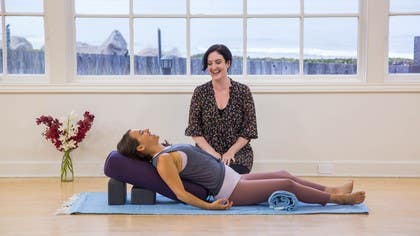
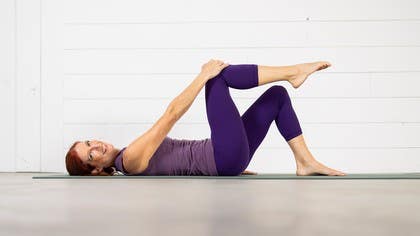
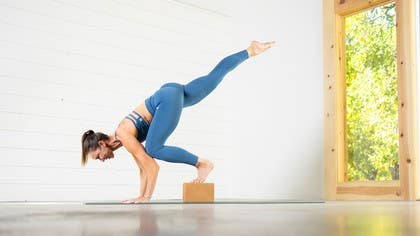

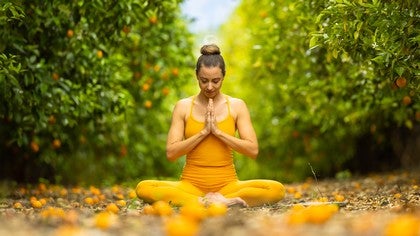




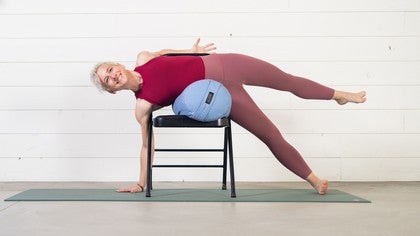


You need to be a subscriber to post a comment.
Please Log In or Create an Account to start your free trial.